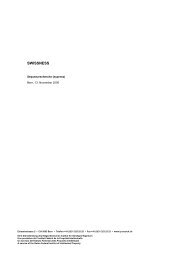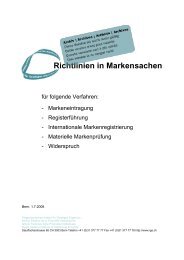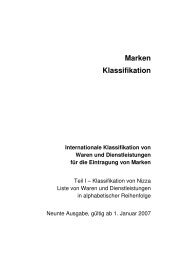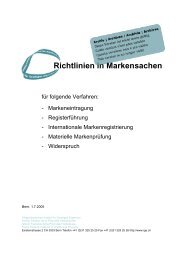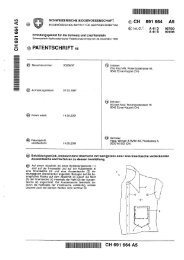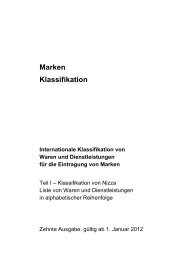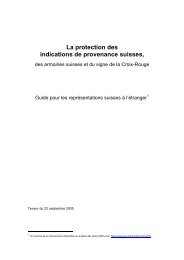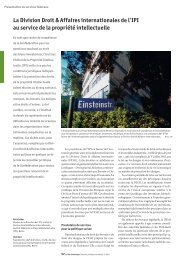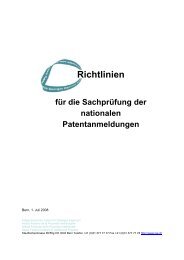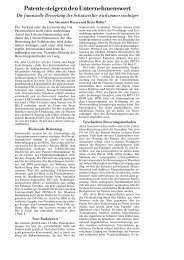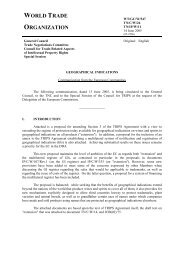AVIS DE DROIT PROTECTION DES SIGNES NATIONAUX
AVIS DE DROIT PROTECTION DES SIGNES NATIONAUX
AVIS DE DROIT PROTECTION DES SIGNES NATIONAUX
You also want an ePaper? Increase the reach of your titles
YUMPU automatically turns print PDFs into web optimized ePapers that Google loves.
ROYAUME-UNI<br />
The grantee of any Coat of Arms which has been granted by the Queen has the right to<br />
authorise or refuse to authorise the use of that coat of arms in a trade mark registered in the<br />
United Kingdom.<br />
(ii) National Insignia Used as Company or Business Names<br />
No-one has a right to register a protected word as part of a company name or to use it as part<br />
of a business name.<br />
(iii) Other Commercial Use of National Insignia<br />
Any trader may apply to his or her goods a true trade description which includes an<br />
appellation of origin or otherwise indicates a national connection.<br />
Only persons who have received authorisations from the public interest organisations that<br />
have been designated under the Chartered Associations (Protection of Names and Uniforms)<br />
Act 1926 are lawfully permitted to make commercial use of the names, uniforms or badges of<br />
the designated organisations, or of the terms by which their members are commonly known.<br />
Only persons who actually sell goods that belong to a class of goods with a trade name to<br />
which goodwill attaches may lawfully use that trade name in respect of their goods.<br />
b) Conditions d’utilisation<br />
(1) Conditions matérielles d’utilisation<br />
(i) National Insignia Used as Trademarks<br />
A person who wishes to use the flag or notified State emblems of a foreign State Party to the<br />
Paris Convention in a trade mark registered in the United Kingdom must show that<br />
authorisation thereof has been given by the competent authorities of the relevant foreign<br />
country. No provision specifies the manner in which such authorisation is to be proven. In the<br />
case of a foreign flag, it is also possible, in the alternative, to convince the Registrar that “use<br />
of the flag in the manner proposed is permitted without such authorisation”; Trade Marks Act<br />
1994, subsec. 57(1). The British legislation gives no indication of the circumstances in which<br />
this might apply, so it is presumably a reference to the laws of the relevant foreign State.<br />
Persons wishing to use the flags of the United Kingdom or any of its constituent jurisdictions<br />
as part of an unregistered trade mark or “get up” can do so without meeting any criteria (but<br />
refer to point 4 b) (1) (iii) below). Persons who wish to use any of those flags as part of a<br />
registered trade mark need to convince the Registry officials that such use would not be<br />
“misleading”, for example as concerns the real geographical origins of the goods for which<br />
the mark is proposed to be used; Trade Marks Act 1994, subsec. 4(2) and refer to point 3 d)<br />
(i) above.<br />
A person who wishes to use the royal arms, flags or crown, or any words, letters or other<br />
devices indicative of royal patronage, in a trade mark to be registered in the United Kingdom<br />
must show that consent thereto has been given on behalf of Her Majesty. No provision<br />
specifies the manner in which such consent is to be proven. The same is true of proof of the<br />
198



